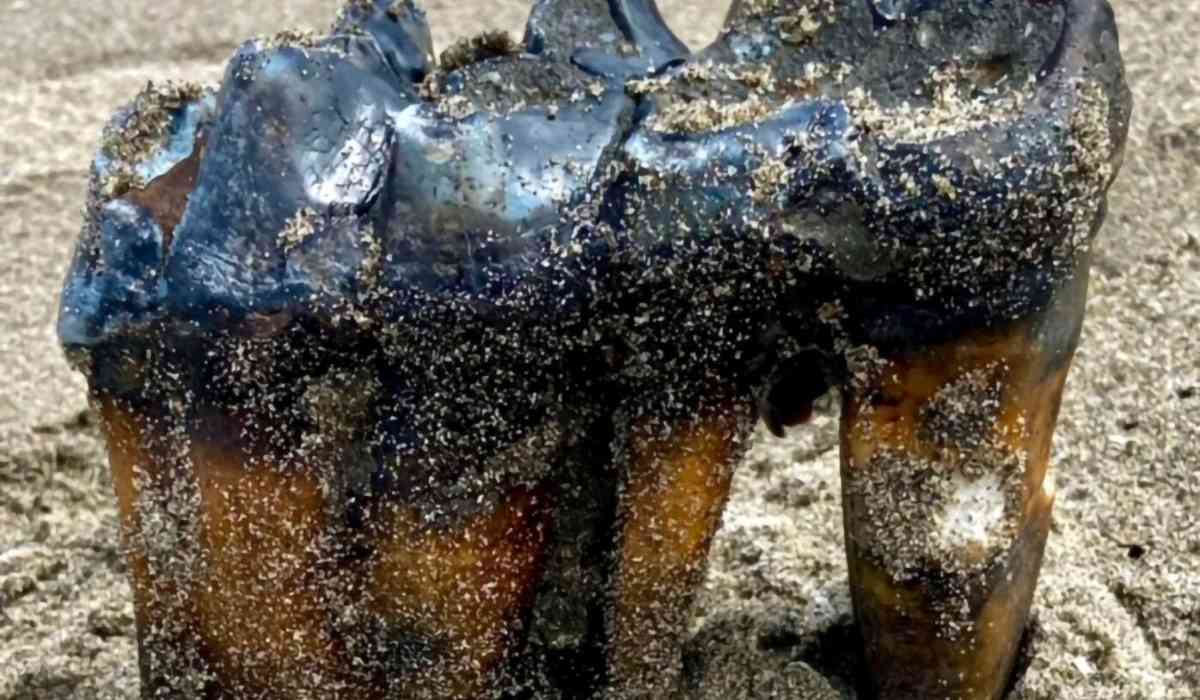Over the Memorial Day weekend, a woman taking a stroll along a California beach came across an odd thing sticking out of the sand, a tooth from a long-extinct mastodon. However, the fossil vanished after that, and it required a media effort and a helpful jogger to find it again. Jennifer Schuh found the teeth on Friday near the entrance of Aptos Creek on Rio Del Mar State Beach in Santa Cruz County, off the coast of Monterey Bay. The teeth were about a foot long and protruded out of the sand." I was on one side of the creek and this lady was talking to me on the other side and she said what's that at your feet," said Schuh. It had a peculiar, almost burning, appearance.
She had no idea what Schuh had found. She then snapped some pictures and posted a need for help on Facebook. The answer was given by Wayne Thompson, the collection advisor for paleontology at the Santa Cruz Museum of Natural History. Thompson recognized the object as a worn tooth from an adult Pacific mastodon, an extinct animal that resembled an elephant. Thompson highlighted the importance of the discovery in his letter and pleaded with Schuh to call him. But when they got back to the shore, the tooth was gone. Weekend looking turned up nothing. Following that, Thompson published a request for help on social media in an effort to find the relic. The appeal received extensive media coverage.
On Tuesday, Jim Smith from the nearby Aptos called the museum. Liz Broughton, the museum's manager of visitor experience, said, "I was so thrilled to get that call." Jim claimed to have discovered it on one of his regular beach runs, but he wasn't certain of what he had discovered until he saw a picture of the tooth on television. Smith gave the museum the tooth, which will be on display there from Friday through Sunday. How ancient the tooth is is unknown. Mastodons normally lived in California between 5 million and 10,000 years ago, according to a museum blog. According to the criteria of fossils, "we can safely say that this specimen would be less than 1 million years old," Broughton said.

Winter storms regularly reveal fossils in the region, so they could have been swept down to the shore from a higher height, claims Broughton. Schuh said she was excited about the prospect that her finding would shed light on long-suppressed secrets regarding the tranquil beach locale. She placed an Amazon purchase for a replica mastodon tooth necklace for herself rather than retaining the tooth. She said, "You don't often get to handle artifacts from the past." Only three mastodon fossil discoveries have been made nearby. The museum also has a second tooth and a skull that was found in 1980 by a teenager. The ocean is fed by the same Aptos Creek where it was found. The museum's executive director, Felicia B. Van Stolk, said in a statement: "We are pleased about this remarkable find and the implications it bears for our knowledge of prehistoric life in our region.
© Copyright 2023. All Rights Reserved Powered by Vygr Media.

























